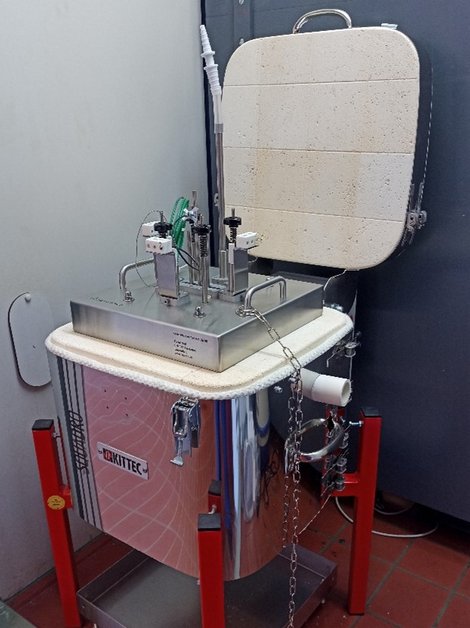Contact: Dr.-Ing. Andreas Lindermeir
As part of the energy transition, the aim is to completely dispense with fossil fuels. In addition to energy sources, however, raw materials are also required for the chemical industry, which today are also generally obtained from the processing of crude oil or natural gas. One alternative based on renewable energy is the power-to-syngas concept, which uses renewable energy to convert water and carbon dioxide into hydrogen and carbon monoxide (synthesis gas). A wide variety of hydrocarbons such as methanol, dimethyl ether (DME) or olefins, which are required in today's chemical industry, can be produced from synthesis gas using downstream synthesis processes. Synthetic fuels such as kerosene can also be produced sustainably from synthesis gas.
High-temperature steam and co-electrolysis is a very efficient and ecologically favorable method of synthesis gas production if electricity from renewable energy sources is used. In high-temperature steam electrolysis (HTEL), water is converted into hydrogen and oxygen at temperatures between 700 °C and 900 °C in a solid oxide electrolyzer cell (SOEC):
H2O→ H2 + ½ O2
According to the water-gas equilibrium, the hydrogen obtained can then be used to reduce carbon dioxide to carbon monoxide and thus to produce synthesis gas:
CO2 + 2 H2 ⇌ CO + H2 + H2O
The HTEL even allows the direct and simultaneous reduction of water and carbon dioxide to synthesis gas within the solid oxide electrolysis cell. This process is known as co-electrolysis and is also currently a major focus of HTEL research.
H2O+ CO2 → H2 + CO + O2
At the CUTEC Research Center, high-temperature steam and co-electrolysis are investigated at both cell and stack level. Two different test benches are available for this purpose. With the fully automated stack test stand (Fig. left), cell stacks of up to 15 cells and an output of up to 5 kW can be operated in both electrolysis and fuel cell mode. The temperature distribution within the stack, the pressure loss and the individual cell voltages can also be measured in long-term tests.
The second test stand (Fig. right) enables the investigation of individual cells with an area of 25 cm² as well as stacks of up to five such cells. The test stand has an innovative sealing concept so that a gas tightness of up to 95% can be achieved without the use of a glass plumb bob. This means that the cells can be replaced non-destructively and consequently even reused. Furthermore, the associated potentiostat enables EIS measurements to be carried out, whereby the potential of the cell can be tapped at different points on the cell surface using eight additional voltage outputs. With the help of the existing measurement technology, it is possible to record inhomogeneous potential distribution on the cell surface, determine kinetic parameters of the electrode reactions and measure mass transport limitations.


